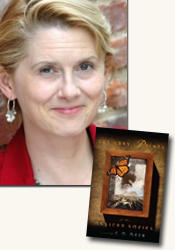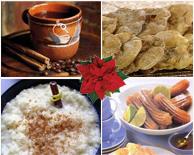author interview
book reviews:
· general fiction
· chick lit/romance
· sci-fi/fantasy
· graphic novels
· nonfiction
· audio books
· author interviews
· children's books @
curledupkids.com
· DVD reviews @
curledupdvd.com
newsletter
win books
buy online
links
home
for authors
& publishiss
for reviewers

|
|||||
|
Pronounced pea-lon-see-yo, and usually translated as “brown sugar” or “molasses,” piloncillo is so much more! First of all, the flavor is far richer, smoky, with orange and cinnamon and sometimes anise; second, it doesn’t come in a bag as grains, like sugar, nor in a jar, like molasses. Piloncillo is a rock-hard cone, and to use it, you’ll need to melt it. A small bother, true, but UNESCO did not add Mexican Cuisine to the list of the Intangible Cultural Heritage of Humanity for nothing! In my novel, based on a true story of 1860s Mexico, an ex-president’s widow, Doña Juliana de Gómez Pedraza, pours her guests café de olla, yet another delicia that just doesn’t translate. In a mouthful of words: it’s coffee with piloncillo and chocolate and maybe some extra cinnamon and ground up almonds. Just the thing for a chilly Mexico City December! (Yes, it does get chilly.)
But a novel cannot go on forever. There are so many piloncillo-laden dishes that did not make it in, from chongos (a kind of curdled pudding) to churros (snakey donuts). Perhaps the most popular traditional Christmas treat, one that surely my characters of 1860s would have enjoyed, is buñuelos: crisp thin fritters drenched with a syrup made of piloncillo. You might add cut-up fruit such as guavas, apples, bananas, and, if this is for abuelita (not the kids), add a shot of chocolate liqueur. Where to find piloncillo? A Hispanic market wouldn’t be one if it didn’t carry it. There are numerous sources online, among them,
www.mexgrocer.com. And now that I think about it, I’ll bet most Wal-Marts carry piloncillo as well.
C.M. Mayo is an award-winning writer and the author of The Last Prince of the Mexican Empire. The book’s trailer is available online at www.cmmayo.com/last-prince-trailer.html, and a book group meeting menu at www.cmmayo.com/last-prince-book-club-menu.html.
|
|||||
| fictionnsf/f · comic books · nonfiction · audio newsletter · free book contest · buy books online review index · links · · authors & publishiss reviewerss |
|
| site by ELBO Computing Resources, Inc. | |



 More piloncillo: the Emperor Maximilian’s staff enjoys flan and arroz con leche (rice pudding); the elaborate menus for State dinners, a farrago of French, Austrian, and Mexican dishes include all kinds of piloncillo-laden sweets; in the last days of the Empire, when léperos are dropping in the street, for her visitors, Mrs. Yorke adds the little she has left of it to her scanty raisin cake. And though she wouldn’t admit it, Alice Green de Iturbide’s famous strawberry and pumpkin American-style pies, are more toothsome made with piloncillo.
More piloncillo: the Emperor Maximilian’s staff enjoys flan and arroz con leche (rice pudding); the elaborate menus for State dinners, a farrago of French, Austrian, and Mexican dishes include all kinds of piloncillo-laden sweets; in the last days of the Empire, when léperos are dropping in the street, for her visitors, Mrs. Yorke adds the little she has left of it to her scanty raisin cake. And though she wouldn’t admit it, Alice Green de Iturbide’s famous strawberry and pumpkin American-style pies, are more toothsome made with piloncillo.